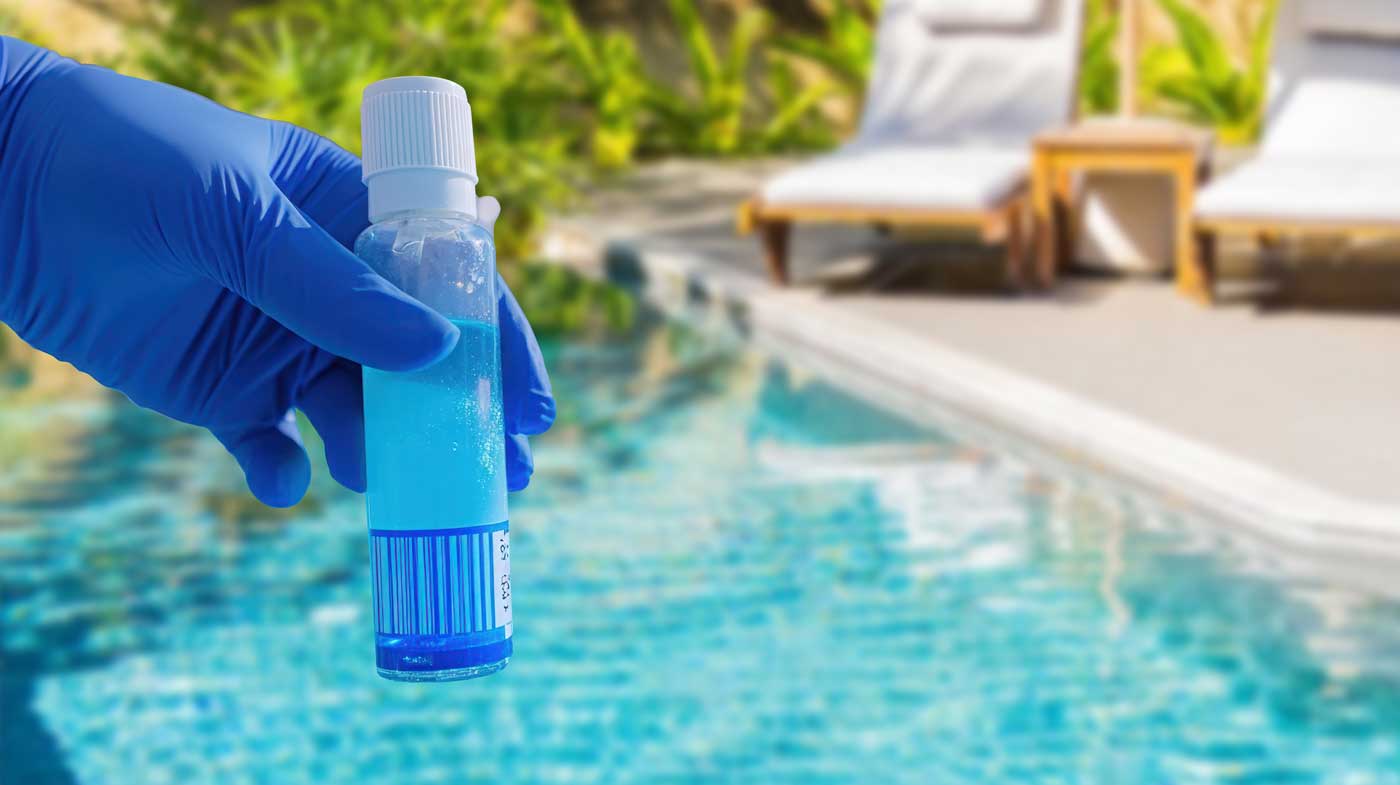Also, warranties can be voided if improper water chemistry is determined to be the reason…
One question first-time swimming pool owners often ask is: how much chlorine does my swimming pool need? To determine the amount of chlorine your swimming pool requires, you need to consider more than just swimming pool size alone. Swimming pools are exposed to a number of factors that determine the effectiveness and necessity of chlorine. We discuss several of these factors below.
Volume and Surface Area of Swimming Pool
The volume and surface area of your swimming pool are directly proportionate to the amount of chlorine it requires. Typically, more contaminants are found in swimming pools with greater volume. Also, greater surface area typically translates to greater potential for evaporation of swimming pool water and dissolved chlorine. The greater the volume and/or surface area of a swimming pool, the greater the required amount of chlorine.
Temperature of Swimming Pool Water
Temperature affects a swimming pool’s required amount of chlorine in two ways. First, it determines how easily contaminants like algae and bacteria can survive in a swimming pool (contaminants thrive in warmer temperatures). Second, temperature determines how quickly reactions occur between the chlorine and the contaminants in a swimming pool. Chlorine reacts with contaminants, and therefore breaks down much more quickly, in higher temperatures.
In general, warmer swimming pools require more chlorine.
Exposure to Sunlight and Ultraviolet Rays
Unstabilized chlorine dissipates very quickly when exposed to the sun’s ultraviolet rays. In fact, sunlight can destroy most of the chlorine in a swimming pool in as little as a few hours. Sun exposure also results in evaporation of both the swimming pool water and the chlorine dissolved in that water. So, more chlorine is required in swimming pools that see more sunlight.
Level of Cyanuric Acid
Cyanuric acid, more commonly known as stabilizer, slows down the destruction of chlorine by the sun’s ultraviolet rays in outdoor swimming pools. As mentioned above, unstabilized chlorine dissipates very quickly when exposed to sunlight. Homeowners who use less (if any) stabilizer must add chlorine to their swimming pools more often in order to maintain an appropriate ppm concentration.
You have two options with regard to purchasing stabilizer. You can purchase stabilized chlorine, which is chlorine premixed with stabilizer. Stabilized chlorine is best for daily chlorination. You can also purchase unstabilized chlorine and stabilizer separately. This option is best for when you want to shock your swimming pool now and stabilize it later.
Number of Swimmers
Swimmers bring various contaminants into a swimming pool, including body oils, waste, sweat, and sunscreen. As the number of swimmers increases, so does the number of contaminants that enter a swimming pool. So, swimming pools that see more average swimmers per day require more chlorine.
Exposure to Nitrates and Phosphates
Nitrates are introduced into a swimming pool via sources of ammonia, such as swimmer waste and perspiration. Phosphates are introduced via lawn and tree fertilizers, well water, and soaps. Algae feed on nitrates and phosphates, so when both are present in a swimming pool, algae flourishes. More chlorine is therefore required to neutralize extra algae that form due to the presence of nitrates and phosphates. The greater the exposure by a swimming pool to nitrates and phosphates, the greater the required amount of chlorine.
Exposure to Rainfall and Frequency of Backwashing
While light rainfall has little effect on a swimming pools chlorine level, heavy rainfall can significantly dilute it. Low chlorine levels promote the growth of algae and bacteria. Your swimming pool will therefore require more chlorine shortly after heavy rainfalls.
Backwashing is the process of cleaning a piece of equipment, usually a Sand or DE filter, by reversing the flow of water through it. Because it involves expelling old water from a swimming pool and adding new water, backwashing significantly lowers chlorine levels. Your swimming pool will require more chlorine after the backwashing process is complete.
As you can see, many factors determine the amount of chlorine needed in a swimming pool to maintain an appropriate concentration. For your safety, we at AutoPilot recommend that your hire a licensed swimming pool professional to maintain your swimming pool’s chemical levels. If you would like tips on lowering your swimming pool chlorination costs, be sure to check here. Thanks for reading!


This Post Has 0 Comments